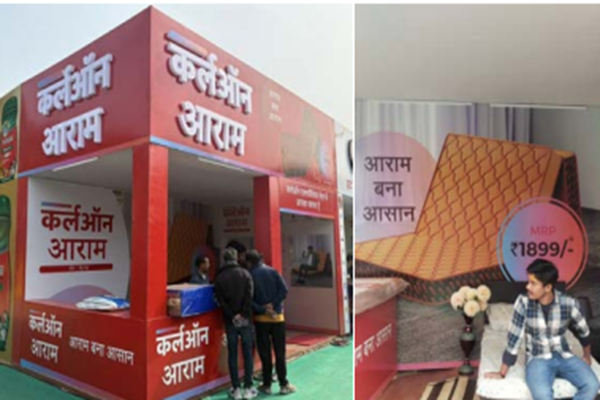.png)

Krishnadevan is Consulting Editor at BasisPoint Insight. He has worked in the equity markets, and been a journalist at ET, AFX News, Reuters TV and Cogencis.
July 4, 2025 at 8:55 AM IST
Sheela Foam, the company behind the familiar Sleepwell mattress, is in the thick of a challenging transition. The news that CEO Nilesh Sevabrata Mazumdar has stepped down just as the company faces its biggest integration test could understandably make investors anxious.
The company’s shares, which peaked around the time of the Kurlon acquisition, have since tumbled nearly 50% and now trade below the IPO issue price, a sharp reversal for a business once celebrated for steady, profitable growth.
The story starts with Sheela Foam’s 2023 acquisition of Kurlon, a move designed to transform the business from a regional star into a national powerhouse. By plugging distribution gaps in southern and eastern India, Sheela Foam instantly expanded its reach to over 11,000 outlets and claimed a 35–40% share of the organised mattress market. The logic was to scale up, unlock efficiencies, and broaden the product range.
But the numbers reveal a more complicated picture. Gross margins remain healthy at 42.5%, and the company has aggressively moved to cut costs, shutting six plants and streamlining logistics. Yet, despite these efforts, the consolidated EBITDA margin has slipped to 8.3–9%, down from the pre-merger range of 11–13%.
The management says it is still targeting a 13–15% margin, but progress has been slow. The company has realised ₹1.2 billion in synergy savings, with another ₹1.3 billion expected. However, these gains are being eroded by pressure on average selling prices and a product mix that’s increasingly skewed toward lower-margin value brands.
On the surface, growth looks robust. For 2024–25, consolidated revenue jumped 15% to ₹34.39 billion, with mattress volumes up 12%. E-commerce now accounts for ₹2 billion in business. But a closer look reveals the cracks: net profit for the year has nearly halved to ₹967 million, and profit margins have dropped to 2.8% from 6.1% a year ago.
Meanwhile, the competitive landscape is shifting. Startups like Wakefit and SleepyCat are capturing market share among online and urban consumers. Wakefit’s revenue now rivals that of Sleepwell’s mattress business, a clear sign that digital-first challengers are here to stay.
Sheela Foam’s response has been to double down on e-commerce and expand into smaller towns. It opened 400 exclusive showrooms last year and plans to add 1,000 more. But unless same-store productivity improves, this expansion could backfire, leading to over-distribution and diminishing returns.
To diversify, Sheela Foam has acquired a stake in Furlenco, the furniture rental startup, aiming to tap into branded furniture and cross-sell to mattress buyers. It is also launching products aimed at Gen Z and expanding into more than 4,000 small towns. Financial discipline is now in focus, with ₹4.5 billion in cash, ₹2 billion worth of real estate lined up for monetisation, and a plan to be net-debt-free within two to three years.
But investor patience is wearing thin. The market wants to see if Sheela Foam can deliver on its margin promises and make the Kurlon bet pay off, or if it’s simply chasing scale at the expense of its historic strengths. The next two quarters will be crucial.
If cost savings begin to show up in the bottom line and growth regains momentum, Sheela Foam could regain investor confidence. If not, it risks becoming another case study in Indian consumer M&A history, a company that gained scale but lost its way.
For now, Sheela Foam’s journey is a classic test of whether growth for its own sake can deliver real, lasting value. The answer will come down to execution, discipline, and the company’s ability to convert its bigger footprint into bigger profits.




